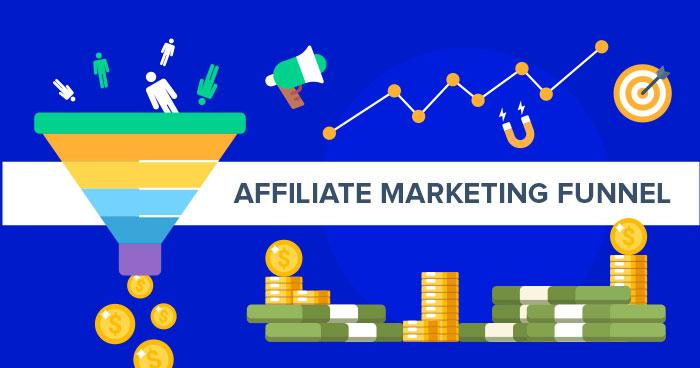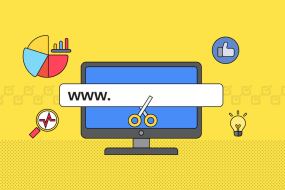
In today’s digital landscape, affiliate marketing has emerged as a powerful strategy for businesses to generate sales and boost revenue.
But what exactly is an affiliate marketing funnel? Why is it crucial for small business owners, entrepreneurs, and marketers to implement a strategic approach?
At its core, an affiliate marketing funnel is a systematic process that takes potential customers on a journey from the initial awareness stage all the way to conversion.
It involves various stages where affiliates or marketers strategically guide their audience toward making a purchase or taking some desired action.
By understanding and implementing the principles of this funnel, businesses can enhance their chances of success in the competitive world of online marketing.
So why is it essential for businesses to embark on this strategic journey? The answer lies in its ability to maximize customer engagement and optimize conversions.
Rather than relying solely on random one-off promotions or advertisements that target broad audiences, an effective affiliate marketing funnel presents opportunities to build lasting relationships with prospects by nurturing them at every stage of the buying process.
As we delve deeper into each phase – from creating awareness and sparking interest all the way through conversion and advocacy – you’ll discover actionable tips that can help skyrocket your business’s growth.
So buckle up! We have lots to explore about demystifying the power of an affiliate marketing funnel
The Different Stages:
a. Awareness stage
At the top of the affiliate marketing funnel is the awareness stage, where potential customers are introduced to your product or service. This can be achieved through various channels such as social media presence and content marketing. By establishing a strong online presence and creating valuable and engaging content, you can effectively grab the attention of your target audience and make them aware of what you have to offer.
b. Interest stage
Once you’ve captured their attention, it’s crucial to keep potential customers engaged by providing compelling content that addresses their pain points and provides value. This can take the form of blog posts, videos, or informative newsletters. By focusing on solving problems or offering insights related to your niche, you build trust with your audience and position yourself as an authority in your industry.
c. Consideration stage
After generating interest, it’s important to showcase how your product or service stands out from competitors in order to move prospects further down the funnel toward conversion. Highlighting unique benefits, features, and advantages over alternatives can help differentiate yourself from competitors in a crowded market. Additionally, offering incentives such as discounts or free trials during this stage can entice potential customers into considering making a purchase.
d. Conversion stage
The ultimate goal of any marketing funnel is conversion – turning interested prospects into paying customers. A strategically placed call-to-action (CTA) alongside persuasive copywriting on landing pages helps guide potential customers toward making purchasing decisions. Provide clear instructions on how they can buy your product/service. Highlight key selling points, and emphasize urgency by using limited-time offers. Implementing A/B testing techniques and optimizing landing pages for better user experience could significantly improve chances for converting leads.
e. Advocacy stage
Nurturing customer loyalty after sale is equally important; customer retention drives recurring revenue. By providing exceptional post-purchase experiences like personalized follow-ups, and inquiries, and resolving issues expediently, you not only nurture loyalty but also transform customers into advocates.
Empowering them to refer friends through referral programs, leave incentivized reviews, or spread positive word-of-mouth can significantly boost your brand’s visibility and credibility.
By understanding and implementing the different stages of an affiliate marketing funnel, you can effectively guide potential customers from awareness all the way to conversion and advocacy. This comprehensive approach ensures that you are continuously nurturing leads throughout their journey, maximizing revenue generation opportunities while building a loyal customer base.
Related: Best Funnel Builder for Affiliate Marketing
Implementing Strategies at Each Stage for Maximum Effectiveness:
1. Actions and Tools for Generating Awareness
To effectively generate awareness for your affiliate marketing funnel, it’s important to utilize social media platforms. Build a strong presence on networks like Facebook, Instagram, Twitter, and LinkedIn where your target audience is most active. Engage with your followers through regular posts, contests, and promotions.
In addition to social media, creating engaging content such as blog posts or videos can also help drive awareness. Share valuable insights, industry trends or how-to guides that resonate with your target audience. This will not only establish you as an authority in the field but also pique their interest in exploring more about what you have to offer.
2. Tactics Employed During the Interest Phase
Once you’ve captured the attention of potential customers and sparked their interest in your offerings through the awareness stage, it’s time to provide them with valuable information via email newsletters. Craft compelling emails that contain relevant content tailored specifically towards this interested group. Offer exclusive tips or expert advice pertaining to their pain points or challenges.
Another effective tactic during this stage is offering lead magnets like free e-books or courses related to your niche market. By providing these resources in exchange for their contact information (such as name and email address), you are able to build a list of qualified leads who have expressed interest in what you have to offer.
3. Techniques for Driving Consideration
To drive consideration from prospects who are now aware of your brand and show genuine interest in what you offer, it’s crucial to highlight key selling propositions that separate you from competitors within the industry. Utilize persuasive copywriting techniques combined with testimonials/reviews from satisfied customers emphasizing the value they received from choosing your product/service over alternatives.
Furthermore, don’t underestimate the power of limited-time discounts or special offers when driving consideration towards conversion. By using urgency-driven tactics such as countdown timers or scarcity-based messaging like limited stock available, prospects are more motivated to take action and make a purchase.
4. Converting Prospects into Customers
To convert prospects into paying customers, it’s essential to craft compelling calls-to-action (CTAs). These should be clear, concise, and placed strategically throughout your marketing materials. Use strong action verbs combined with enticing benefits that create a sense of urgency or FOMO (fear of missing out) compelling the prospect towards conversion.
Additionally, ensure your landing page design is intuitive and user-friendly. Make sure it’s visually appealing with persuasive copy that reinforces the value proposition you’ve communicated earlier in the funnel. Streamline the purchasing process by removing any unnecessary steps or distractions that may cause abandonment.
5. Fostering Advocacy to Maximize Referrals
After successfully converting prospects into customers through your affiliate marketing funnel, focus on fostering advocacy from these satisfied customers. Providing exceptional customer service is crucial as positive experiences can lead to repeat purchases and referrals.
Moreover, encourage satisfied customers to share their experiences via incentives such as referral programs or discounts for future purchases. Word-of-mouth recommendations have been proven time and again as one of the most effective ways to attract new customers, making this stage critical for long-term growth in revenue generated through affiliations within your network.
Conclusion
Leveraging an affiliate marketing funnel allows businesses to strategically connect with their target audience throughout every step of the buyer’s journey. By attracting qualified leads, nurturing relationships through engaging content, and facilitating conversions through effective calls-to-action tactics like emails or retargeting ads; companies can greatly increase their chances for success in generating sales revenue while also building long-lasting advocacy from satisfied customers.







